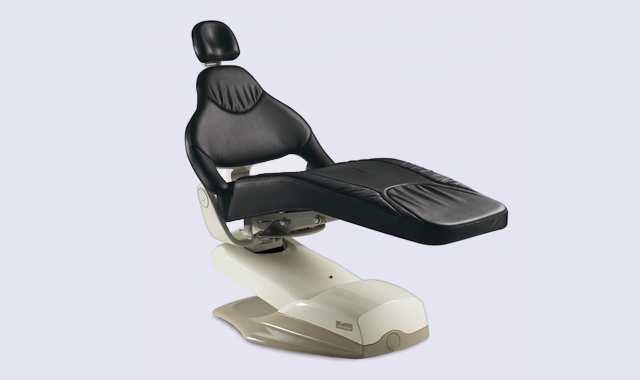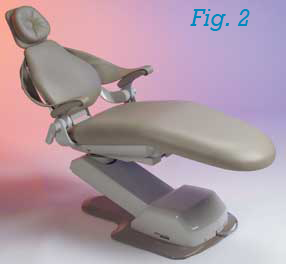The 4 ergonomic ‘must-haves’ in a patient chair
Naturally, you want your patient to be comfortable. However, when we compare how many hours a year the average patient spends reclined in a dental chair (several hours), with the time you spend hovering over the oral cavity (over 2000 hours), who is really at risk of developing discomfort or pain?

When mulling over the purchase of a patient chair at an exhibit hall, what is the first thing most dentists do? Lie in the chair. Naturally, you want your patient to be comfortable.
However, when we compare how many hours a year the average patient spends reclined in a dental chair (several hours), with the time you spend hovering over the oral cavity (over 2000 hours), who is really at risk of developing discomfort or pain?
For decades, the focus of many dental chair manufacturers has been on patient comfort: luxuriously cushy with wide, roomy armrests. As the problem of work-related pain and injuries among dentists has come to the forefront of the profession, manufacturers are focusing on ergonomic features of patient chairs. But what, exactly, are desirable ‘ergonomic features’?
More from the author: Why all exercise is not necessarily good exercise for dentists
When considering patient chair ergonomics, desirable features should facilitate neutral posture of the spine, shoulder, elbow and wrist, maintain proper body mechanics, and limit excessive reaching. I often observe operators having difficulty gaining close proximity to the oral cavity while maintaining neutral posture. If the patient chair does not allow close operator positioning, the dentist is forced to either reach excessively forward with the entire arm or bend the trunk forward. Both place the operator at risk for injury.
Here are the top four ergonomic chair features you should consider:

Small, thin headrests
These headrests allow for greater legroom, and closer accessibility. Double-articulating headrests allow the most flexibility in patient positioning. Angling the double articulating headrest steeply downward when treating the upper arch has significant ramifications for improving the operator’s posture!
Narrow upper backrests
Narrow backrests allow closer positioning to the oral cavity, especially in the nine to 10 o’clock positions. A narrow backrest can also greatly improve the assistant’s posture by allowing closer positioning. The Midmark Ultratrim patient chair (Fig. 1) and DentalEZ J/V Generation Chair (Fig. 2) both feature narrow upper backrests.
Some of the worst postures I repeatedly observe are clinicians working in the nine o’clock position at a patient chair with wide ‘wings’. These wide backrests inhibit close positioning, especially at the nine o’clock position. Consider retrofitting wide-backed patient chairs with a narrower backrest to gain three to four inches closer proximity to the oral cavity. Many manufacturers carry a narrower (pedo) backrest option.
Related reading: 3 ergonomic mistakes that could end your dental career

Chair height adjustment
Chair height adjustment should go low enough to allow the operator to work with relaxed arm posture. Some patient chairs don’t adjust low enough, so when working on the lower arch in the semi-supine position, shorter operators are forced to either sit on the front edge of their chair or elevate their arms. The chair should also adjust high enough so the operator has the option to comfortably stand for extractions, exams or impression-making without bending forward.
Swivel feature
This feature enables the chair to rotate in the operatory. This is an important feature if the space between the patient headrest and counter (the 12 o’clock position) is minimal. The industry standard for this clearance in the 12 o’clock position is about 22-24”.